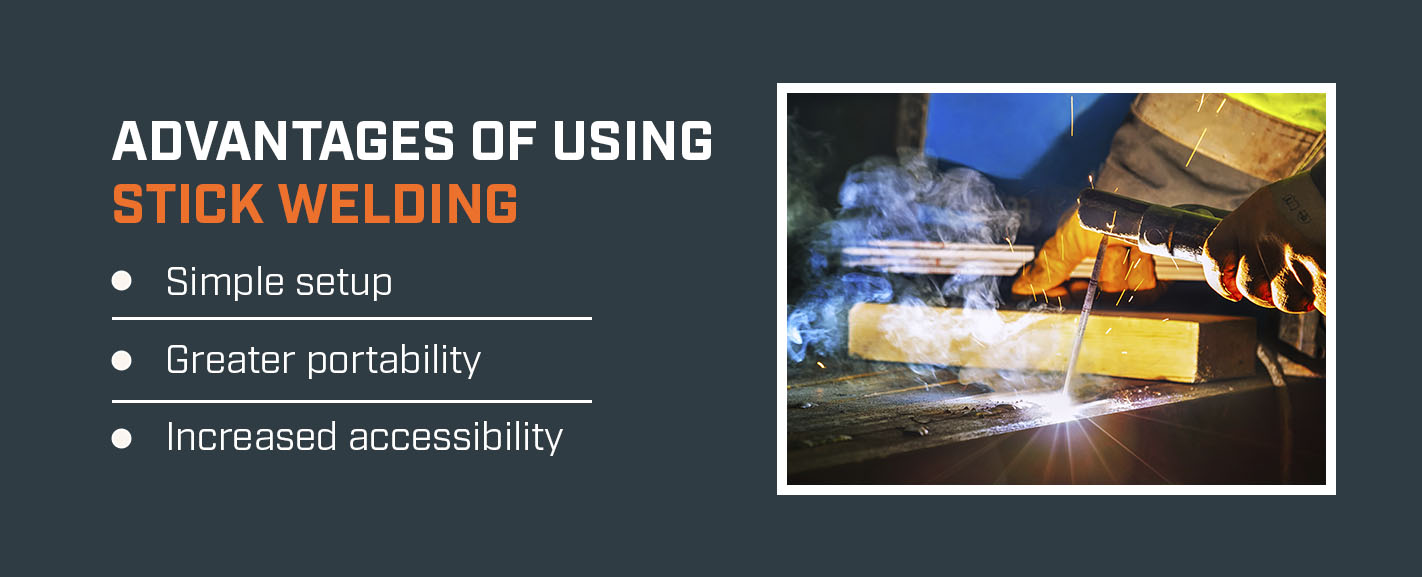
Stick welding — also called shielded-metal arc welding (SMAW) or manual arc welding — is the most common welding technique in the fabrication industry. During the SMAW process, the weld joint forms when an electrode rod coated with flux fuses with the workpiece surface.
This welding process begins when the operator holds the rod near the workpiece’s surface to form the arc. When the flux vaporizes, it creates layers of gas and slag that protect the weld from potential contamination. Once the weld is complete, the operator manually chips the slag off the weld bead.
Stick welding stands out from other welding processes because of its cost savings and ability to handle various jobs across many applications. Specific benefits include:

Despite its many benefits, stick welding is only suited for specific projects and has several disadvantages when not utilized for the right job. This type of welding is slow compared to other methods, making it more practical for small jobs or projects requiring fast setup times. It can also be more challenging for welders with limited skill levels or experience. In addition, stick welding is impractical for thinner substrates due to the chance of burn-through.
Stick welding is excellent for thicker metals like mild steel, steel alloys, stainless steel, chrome, iron and nickel-based alloys. Since SMAW is one of the first skills most certified welders learn, it is one of the most prevalent welding methods in the fabrication and construction industries. Although many advanced fab shops use more automated methods for high-volume jobs, most operations have stick welding gear in-house for projects requiring fast or portable setups.
SMAW is highly mobile and versatile, making it an excellent choice for quick repairs, even in adverse environments. Stick welding can work in rainy, windy or underwater conditions without sacrificing weld quality. This process also permits welding rusty materials or metals with unclean surfaces.
If you’re still unsure which welding process is optimal for your manufacturing requirements, the professionals at PBZ Manufacturing can help. Our certified welders have decades of combined experience delivering high-quality solutions to increase your productivity and minimize your costs. Call 717-584-8767 or contact us online today to learn more.